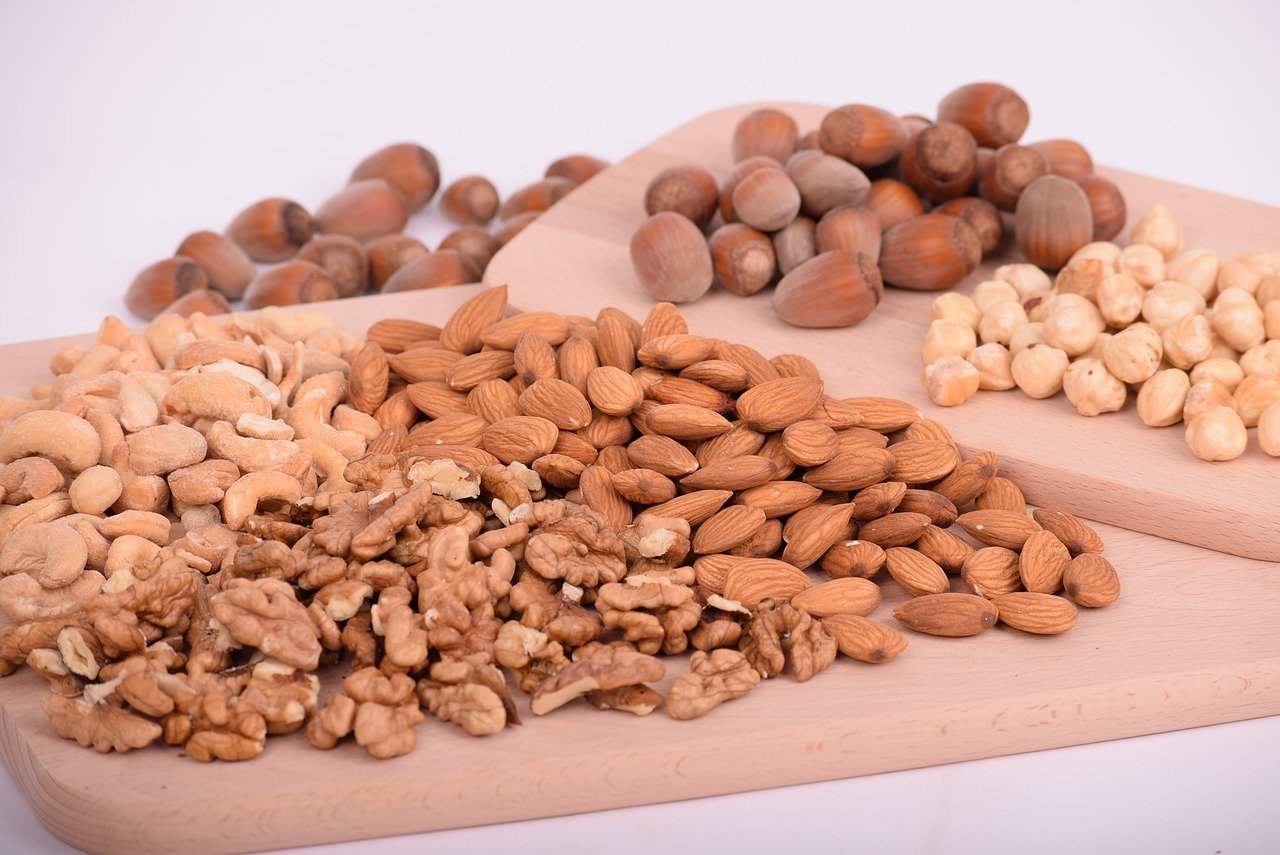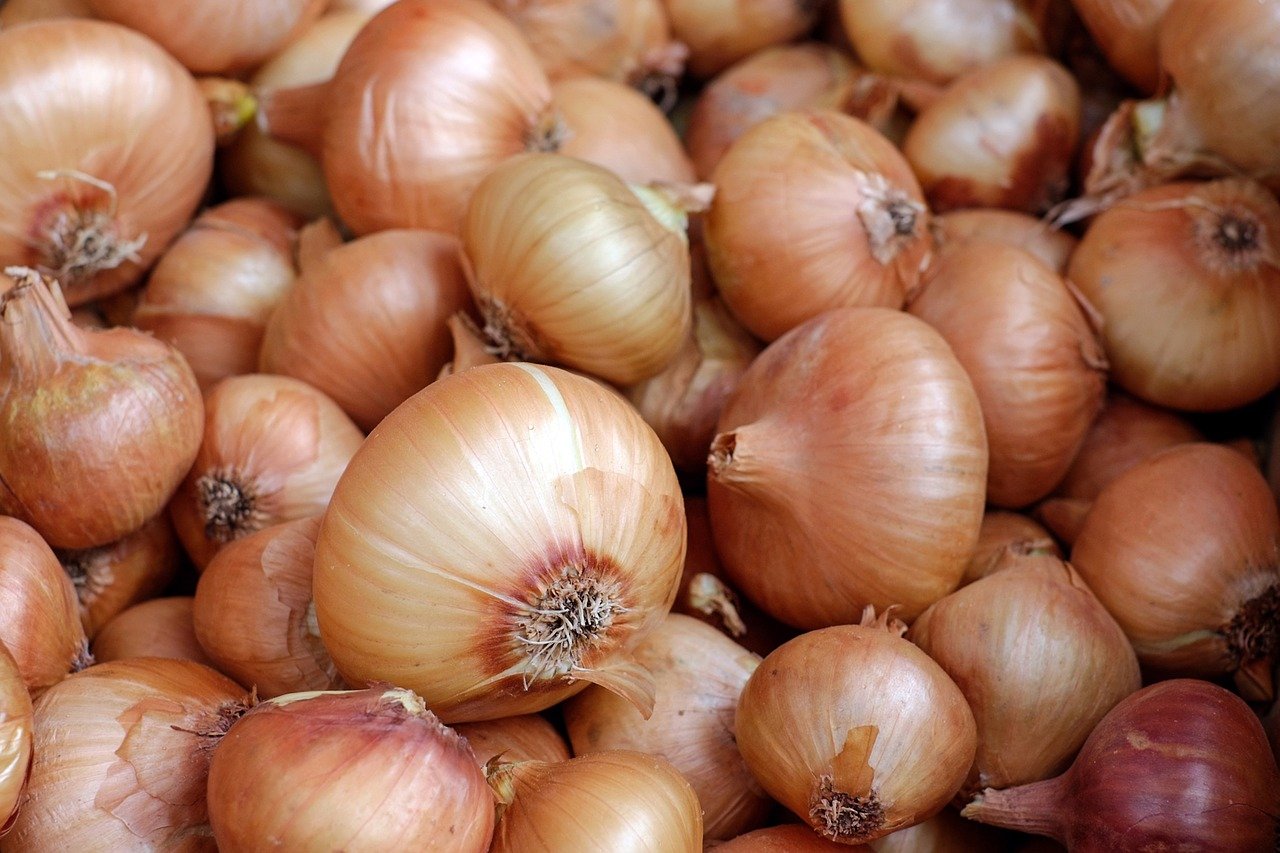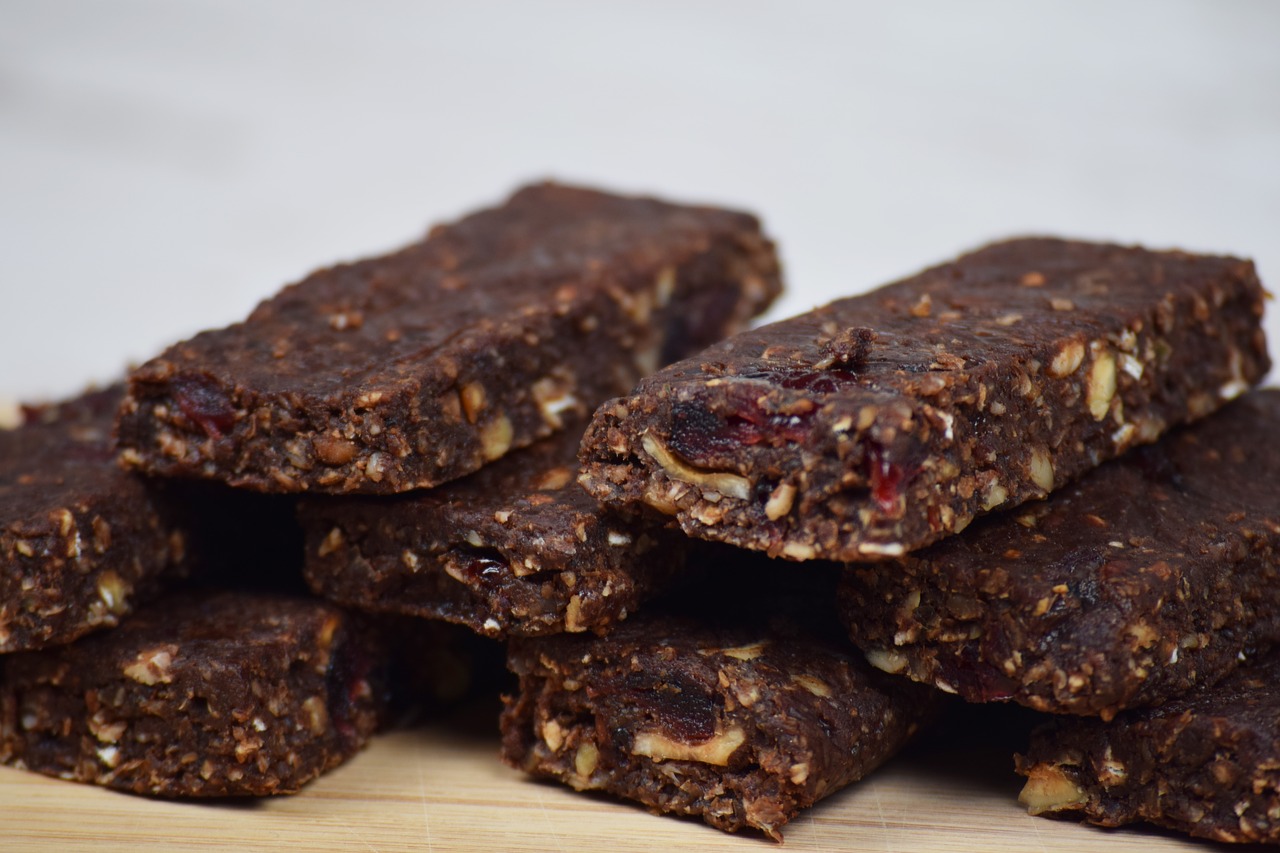Miscellaneous Foods
Miscellaneous Foods and Alzheimer's
There three other foods that have been shown to have positive effects in randomized clinical trials against Alzheimer’s, but they are hard to categorize. These three foods are seaweed, cooking oils, and chocolate. All three are covered below.
Seaweed and Alzheimer's
Seaweed has a diverse range of compounds that are structurally unique and functionally diverse. Some of these compounds have been shown to be potential treatments for cancer, cardiovascular disease, diabetes, metabolic syndrome, obesity, osteoporosis, and neurological disorders. In terms of Alzheimer’s, dozens of the unique compounds in seaweed have been shown to have positive effects as shown in many in vitro and in vivo studies. Some of these effects include anti-inflammatory properties, antioxidant activities, anticholinesterase effects, the ability to inhibit amyloid beta aggregation, amyloid-beta clearance, maintaining cholesterol balance and anti-aging properties. I’ll discuss two seaweed compounds that have Alzheimer’s clinical data available.1,2
Tramiprosate (Homotaurine) is an amino acid found in marine red algae. Nori, the seaweed that is commonly used in sushi, is an example of a type of marine red algae. Tramiprosate resembles GABA, the main inhibitory neurotransmitter in the central nervous system. If you remember from part one of this book, neurotransmitters are chemical signals that transmit messages to neurons. Without GABA, neurons are excited too easily which for humans means increased anxiety and depressive disorders. GABA has been shown to be neuroprotective, act as an antioxidant, is an anti-inflammatory and an antimicrobial. It prevents neurological disorders including cognitive impairment and memory loss, reduces blood pressure, has an anti-diabetic effect, has an anti-cancer effect, reduces allergy responses, and protects the liver, kidneys and intestines from damage. In addition to resembling GABA, tramiprosate has been shown to reduce amyloid aggregation in animal models. Finally, another study using Alzheimer’s patients found that tramiprosate can also improve neurotransmitter homeostasis presumably by acting as a GABA analog and binding to GABA receptors on neurons.3,4,5
A randomized clinical trial phase III was conducted with tramiprosate using 1,052 mild to moderate Alzheimer’s patients with a duration of 78 weeks. Clinical trials for drug approval are divided into multiple phases. Phase III is often the last phase of testing before drug approval. The planned analysis of the phase III trial did not show any change in cognition with tramiprosate treatment. Unplanned analysis of hippocampal volume showed a significant decrease in hippocampal brain volume loss with tramiprosate. In addition, it was found after the preliminary analysis, that Apoe4 homozygous carriers did see a significant change in cognition while patients with other genotypes did not. After combining the data from multiple trials together the investigators found that Apoe4 homozygous patients with mild Alzheimer’s had significant increases in cognitive tests. Three tests were given (ADAS-cog, CDR-SB, and DAD) and compared to placebo the scores increased by 125%, 81% and 71%, respectively. Two additional cognitive tests were given NPI and MMSE, and even though there was improvement in both after 78 weeks (53% and 24%, respectively), the results were not significant. A small clinical study with MCI patients found similar results for Apoe4 carriers and memory but also found that a key biomarkers for inflammatory response is decreased in Apoe4 carriers suggesting that tramiprosate provides both anti-inflammatory effects and cognitive improvement in Apoe4 carriers.3,6
Another seaweed compound found in brown algae called sodium oligomannate has some potential in treating Alzheimer’s disease. In preclinical studies, sodium oligomannate has been found to be protective against beta-amyloid induced neurotoxicity. Sodium oligomannate has undergone initial clinical trials with some success and is approved in China to treat Alzheimer’s. It is currently in a phase III trial to obtain FDA approval. Results from the phase III trial are expected in 2026.1
Olive Oil and Other Vegetable Oils and Alzheimer's
The cognitive benefits of olive oil was shown in the Predimed randomized clinical trial which demonstrated that cognitive performance was higher in the Mediterranean diet with olive oil supplements group compared to the group with nut supplements.
Olive oil is the only significant commercially available vegetable oil that is not extracted from seeds. Olive oil is made from pressing olives until the oil is removed from the fruit. Cold pressing is important because extraction using chemicals or heat can reduce the quality of the oil. To make virgin olive oil, the olive is ground and then put into a press which squeezes out the liquid from the ground up olives. The water is removed from the oil either by gravity or centrifugation. The mechanical process of removing the oil makes virgin olive oil but to become extra-virgin olive oil, the end product must meet certain flavor and odor requirements and oleic acid content must be 0.8 grams per 100 grams of product or less.7,8
Olive oil is almost all fat. Up to 83% of olive oil is made up of a monounsaturated fat called oleic acid. The remaining fat content is made up of polyunsaturated and saturated fat. The polyunsaturated fat contains both linoleic acid, the primary omega-6 fatty acid in vegetable oils, and alpha-linoleic acid, an omega-3 fatty acid. We will discuss omega-6 and omega-3 fatty acids in detail in the supplements and vitamins chapter, but for now know that omega-3 decreases inflammation as well as providing cardiovascular health benefits. Omega-6 is has been commonly thought to increase inflammation, but recent studies have determined that the ratio of omega-6 to omega-3 is what is important. Lower omega 6 to omega 3 ratios has been shown to reduce the risk of many diseases including cardiovascular disease, cancer, and inflammatory and autoimmune diseases whereas a high omega 6 to omega 3 ratio increases disease risks.9,10,11
Our early humans ancestors ate an omega-6 to omega-3 ratio of 1:1 but the modern western diet has a ratio of about 16:1. Part of the reason the western diet is lopsided in favor of omega-6 is because of our increased consumption of vegetable oils. Palm oil and corn oil specifically have very high omega 6 to omega 3 ratios which could have negative health consequences. Therefore when choosing a vegetable oil, it is important to choose one with a low omega 6 to omega 3 ratio.10
Some vegetable oil such as sunflower oil and safflower oil contain virtually no omega-3 content and huge amounts of omega-6. Olive oil has an omega-6 to omega-3 ratio of 12:1 and canola oil has a ratio 2:1. Flaxseed has the lowest omega-6 to omega-3 ratio (0.22:1), but oxidizes quickly and is therefore unstable in its pure form. Mixing flaxseed oil with other vegetable oils may be a good way to improve the omega 6 and omega 3 ratio of those oils.10,12
Compared to other vegetable oils, extra virgin olive oil has the highest polyphenol concentrations. The results of one study showed that extra virgin olive oil had twelve times more polyphenols than canola oil and 24 times more polyphenols than grapeseed oil. However, the amount of polyphenols could vary widely depending on how the olives are grown, harvested, processed, stored and packaged. Extra virgin olive oil is costly and low yield compared to other methods of processing, but the end product contains a higher concentration of polyphenols and that is often reflected in the price.9
Polyphenols and their associated health effects have led to the commercialization of high polyphenol extra virgin olive oils. The first randomized clinical trial using mild cognitively impaired patients and comparing high polyphenol extra virgin olive oil to extra virgin olive oil with moderate levels of polyphenols and to the Mediterranean diet was completed in 2020. The group assigned to the high polyphenol olive oil performed better than the other two groups in almost all cognitive domains. The Mediterranean diet performed the worst out of the three groups.13 https://pubmed.ncbi.nlm.nih.gov/24394520/)
According to the book titled, Extra Virginity: The Sublime and Scandalous World of Olive Oil, olive oil fraud is widespread. Apparently, some extra virgin olive oil manufacturers blend high quality extra virgin olive oil with lesser quality oils, mislabel the blended product as pure extra virgin olive oil and sell the adulterated olive oil for a premium price. Considering that everyone reading this book would presumably be consuming extra virgin olive oil specifically for it’s positive health effects, I would consider this to be a big deal. It is therefore important to purchase extra virgin olive oil from a reputable source, learn what good quality extra virgin olive oil tastes like and buy extra virgin olive oil that has been certified by a third party.
The cognitive benefits of olive oil was shown in the Predimed randomized clinical trial which demonstrated that cognitive performance was higher in the Mediterranean diet with olive oil supplements group compared to the group with nut supplements.
Olive oil is the only significant commercially available vegetable oil that is not extracted from seeds. Olive oil is made from pressing olives until the oil is removed from the fruit. Cold pressing is important because extraction using chemicals or heat can reduce the quality of the oil. To make virgin olive oil, the olive is ground and then put into a press which squeezes out the liquid from the ground up olives. The water is removed from the oil either by gravity or centrifugation. The mechanical process of removing the oil makes virgin olive oil but to become extra-virgin olive oil, the end product must meet certain flavor and odor requirements and oleic acid content must be 0.8 grams per 100 grams of product or less.7,8
Olive oil is almost all fat. Up to 83% of olive oil is made up of a monounsaturated fat called oleic acid. The remaining fat content is made up of polyunsaturated and saturated fat. The polyunsaturated fat contains both linoleic acid, the primary omega-6 fatty acid in vegetable oils, and alpha-linoleic acid, an omega-3 fatty acid. We will discuss omega-6 and omega-3 fatty acids in detail in the supplements and vitamins chapter, but for now know that omega-3 decreases inflammation as well as providing cardiovascular health benefits. Omega-6 is has been commonly thought to increase inflammation, but recent studies have determined that the ratio of omega-6 to omega-3 is what is important. Lower omega 6 to omega 3 ratios has been shown to reduce the risk of many diseases including cardiovascular disease, cancer, and inflammatory and autoimmune diseases whereas a high omega 6 to omega 3 ratio increases disease risks.9,10,11
Our early humans ancestors ate an omega-6 to omega-3 ratio of 1:1 but the modern western diet has a ratio of about 16:1. Part of the reason the western diet is lopsided in favor of omega-6 is because of our increased consumption of vegetable oils. Palm oil and corn oil specifically have very high omega 6 to omega 3 ratios which could have negative health consequences. Therefore when choosing a vegetable oil, it is important to choose one with a low omega 6 to omega 3 ratio.10
Some vegetable oil such as sunflower oil and safflower oil contain virtually no omega-3 content and huge amounts of omega-6. Olive oil has an omega-6 to omega-3 ratio of 12:1 and canola oil has a ratio 2:1. Flaxseed has the lowest omega-6 to omega-3 ratio (0.22:1), but oxidizes quickly and is therefore unstable in its pure form. Mixing flaxseed oil with other vegetable oils may be a good way to improve the omega 6 and omega 3 ratio of those oils.10,12
Compared to other vegetable oils, extra virgin olive oil has the highest polyphenol concentrations. The results of one study showed that extra virgin olive oil had twelve times more polyphenols than canola oil and 24 times more polyphenols than grapeseed oil. However, the amount of polyphenols could vary widely depending on how the olives are grown, harvested, processed, stored and packaged. Extra virgin olive oil is costly and low yield compared to other methods of processing, but the end product contains a higher concentration of polyphenols and that is often reflected in the price.9
Polyphenols and their associated health effects have led to the commercialization of high polyphenol extra virgin olive oils. The first randomized clinical trial using mild cognitively impaired patients and comparing high polyphenol extra virgin olive oil to extra virgin olive oil with moderate levels of polyphenols and to the Mediterranean diet was completed in 2020. The group assigned to the high polyphenol olive oil performed better than the other two groups in almost all cognitive domains. The Mediterranean diet performed the worst out of the three groups.13,14
According to the book titled, Extra Virginity: The Sublime and Scandalous World of Olive Oil, olive oil fraud is widespread. Apparently, some extra virgin olive oil manufacturers blend high quality extra virgin olive oil with lesser quality oils, mislabel the blended product as pure extra virgin olive oil and sell the adulterated olive oil for a premium price. Considering that everyone reading this book would presumably be consuming extra virgin olive oil specifically for it’s positive health effects, I would consider this to be a big deal. It is therefore important to purchase extra virgin olive oil from a reputable source, learn what good quality extra virgin olive oil tastes like and buy extra virgin olive oil that has been certified by a third party.15
Chocolate and Alzheimer's
Cacao beans have been found to have high amounts of a polyphenol called flavonoids and these flavonoids in cacao beans are thought to positively influence the central nervous system by interacting with neuronal signaling pathways. In addition, the cardiovascular benefits of flavonoids in cacao beans have been well documented. This is all great news. The more chocolate we eat the healthier our brains and bodies become.16
The amount of polyphenols in cacao beans is very high. Different cacao beans around the world were tested and the cacao beans with highest polyphenols were roasted and unroasted beans from columbia with a polyphenol content of 3,781 mg/100 g of product and 3,766 mg/100 g of product, respectively. For comparison, a high polyphenol extra virgin olive oil might have 50 mg/100 g. The extra virgin olive oils with the highest polyphenol content has a polyphenol content of around 500 mg/100 g. Cacao beans win. Once mixed into dark chocolate the polyphenol content drops down to 1,664 mg/kg. These polyphenol amounts puts cacao powder as the food with the 4th highest concentration of polyphenols and dark chocolate as the food with the 8th highest concentration of polyphenols. The highest concentration of polyphenols is found in cloves, followed by peppermint and then star anise.17,18,19
A systematic review of randomized clinical trial testing the effect of cocoa on cognition was conducted in 2017. The review documented eight randomized clinical trials testing the effect of daily administration of cacao or dark chocolate on cognition. Of the eight studies, only one study showed that cocoa had no cognitive effects, the other seven showed positive cognitive effects in the treatment groups. The subjects of the studies varied from patients with mild cognitive impairment to healthy adults under 30 to older healthy adults and older adults with vascular disorders. Likewise, the concentration of flavanoids varied. The single study that did not show cognitive improvement was conducted on older healthy adults and the daily flavaniod dose was 397 or 357 mg depending on the treatment group assignment. The author of the review concluded that the flavanoid dose may have been too low to see and effect.16
Alzheimer's and Specific Foods
Miscellaneous Food References:
- Hannan, M..A.; Dash, R.; Haque, M..N.; Mohibbullah, M..; Sohag, A.A.M.; Rahman, M..A.; Uddin, M.J.; Alam, M.; Moon, I.S. Neuroprotective Potentials of Marine Algae and Their Bioactive Metabolites: Pharmacological Insights and Therapeutic Advances. Mar. Drugs 2020, 18, 347. https://doi.org/10.3390/md18070347
- Deleris, P, et al. Seaweeds in Human Health, December 2016, Seaweed in Health and Disease Prevention (pp.319-367)
- Sabbagh MN. Clinical Effects of Oral Tramiprosate in APOE4/4 Homozygous Patients with Mild Alzheimer’s Disease Suggest Disease Modification. J Prev Alzheimers Dis. 2017;4(3):136-137. doi: 10.14283/jpad.2017.24. PMID: 29182703; PMCID: PMC5724794.
- Ngo DH, Vo TS. An Updated Review on Pharmaceutical Properties of Gamma-Aminobutyric Acid. Molecules. 2019 Jul 24;24(15):2678. doi: 10.3390/molecules24152678. PMID: 31344785; PMCID: PMC6696076.
- Martorana A, Di Lorenzo F, Manenti G, Semprini R, Koch G. Homotaurine induces measurable changes of short latency afferent inhibition in a group of mild cognitive impairment individuals. Front Aging Neurosci. 2014 Sep 23;6:254. doi: 10.3389/fnagi.2014.00254. PMID: 25295005; PMCID: PMC4172065.
- Bossù P, Salani F, Ciaramella A, Sacchinelli E, Mosca A, Banaj N, Assogna F, Orfei MD, Caltagirone C, Gianni W, Spalletta G. Anti-inflammatory Effects of Homotaurine in Patients With Amnestic Mild Cognitive Impairment. Front Aging Neurosci. 2018 Nov 2;10:285. doi: 10.3389/fnagi.2018.00285. PMID: 30455639; PMCID: PMC6230970.
- https://www.ams.usda.gov/grades-standards/olive-oil-and-olive-pomace-oil-grades-and-standards
- Claudio Peri, The Extra Olive Oil Handbook, 21 February 2014, John Wiley and Sons
- Gorzynik-Debicka M, Przychodzen P, Cappello F, Kuban-Jankowska A, Marino Gammazza A, Knap N, Wozniak M, Gorska-Ponikowska M. Potential Health Benefits of Olive Oil and Plant Polyphenols. Int J Mol Sci. 2018 Feb 28;19(3):686. doi: 10.3390/ijms19030686. PMID: 29495598; PMCID: PMC5877547.
- Simopoulos AP. The importance of the ratio of omega-6/omega-3 essential fatty acids. Biomed Pharmacother. 2002 Oct;56(8):365-79. doi: 10.1016/s0753-3322(02)00253-6. PMID: 12442909.
- Schwalfenberg G. Omega-3 fatty acids: their beneficial role in cardiovascular health. Can Fam Physician. 2006 Jun;52(6):734-40. Erratum in: Can Fam Physician. 2006 Aug;52:952. PMID: 16812965; PMCID: PMC1780156.
- Hashempour-Baltork F, Torbati M, Azadmard-Damirchi S, Savage GP. Quality Properties of Sesame and Olive Oils Incorporated with Flaxseed Oil. Adv Pharm Bull. 2017 Apr;7(1):97-101. doi: 10.15171/apb.2017.012. Epub 2017 Apr 13. PMID: 28507942; PMCID: PMC5426739.
- Tsolaki M, Lazarou E, Kozori M, Petridou N, Tabakis I, Lazarou I, Karakota M, Saoulidis I, Melliou E, Magiatis P. A Randomized Clinical Trial of Greek High Phenolic Early Harvest Extra Virgin Olive Oil in Mild Cognitive Impairment: The MICOIL Pilot Study. J Alzheimers Dis. 2020;78(2):801-817. doi: 10.3233/JAD-200405. PMID: 33044178.
- Colquhoun DM, Hicks BJ, Reed AW. Phenolic content of olive oil is reduced in extraction and refining. Asia Pac J Clin Nutr. 1996 Jun;5(2):105-7. PMID: 24394520.
- Mueller, T, Extra Virginity: The Sublime and Scandalous World of Olive Oil, April 8th 2013, W.W. Norton and Co.
- Socci V, Tempesta D, Desideri G, De Gennaro L, Ferrara M. Enhancing Human Cognition with Cocoa Flavonoids. Front Nutr. 2017 May 16;4:19. doi: 10.3389/fnut.2017.00019. PMID: 28560212; PMCID: PMC5432604.
- Urbańska B, Kowalska J. Comparison of the Total Polyphenol Content and Antioxidant Activity of Chocolate Obtained from Roasted and Unroasted Cocoa Beans from Different Regions of the World. Antioxidants (Basel). 2019 Aug 6;8(8):283. doi: 10.3390/antiox8080283. PMID: 31390779; PMCID: PMC6720223.
- https://aristoleo.com
- Pérez-Jiménez, J., Neveu, V., Vos, F. et al. Identification of the 100 richest dietary sources of polyphenols: an application of the Phenol-Explorer database. Eur J Clin Nutr 64,S112–S120 (2010)
Back to Diet and Alzheimer's:
Determine which diet and nutrition plan is best for you based on your Apoe status and subtype.






